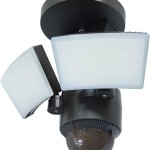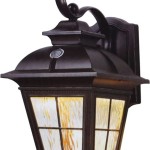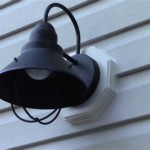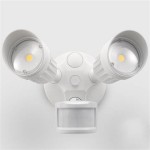How to Make Slipcovers for Outdoor Cushions
Outdoor cushions, subjected to sun, rain, and general wear and tear, can quickly become faded, stained, or simply outdated. Making slipcovers offers a cost-effective and aesthetically pleasing solution for refreshing outdoor furniture without the expense of replacing the entire cushion set. This article provides a comprehensive guide on how to create custom slipcovers for outdoor cushions, ensuring both durability and a customized look.
The process involves careful measurement, fabric selection, cutting, and sewing. Attention to detail at each stage is crucial for achieving a professional-looking and well-fitting slipcover. A well-made slipcover not only enhances the appearance of outdoor furniture but also protects the underlying cushion from further damage, extending its lifespan.
Choosing the Right Fabric
Selecting the appropriate fabric is paramount for outdoor slipcovers. The fabric must be able to withstand the elements and resist fading, mildew, and water damage. Performance fabrics specifically designed for outdoor use are highly recommended. These fabrics are typically treated to be water-repellent, UV resistant, and mildew resistant.
Some popular choices for outdoor slipcovers include:
*Solution-dyed acrylic:
This type of fabric is renowned for its superior fade resistance and durability. The color is incorporated directly into the fiber during manufacturing, ensuring long-lasting vibrancy even with prolonged sun exposure. Solution-dyed acrylic is also resistant to mildew and water damage. *Polyester:
Polyester fabrics designed for outdoor use are generally more affordable than solution-dyed acrylic. They offer good resistance to fading and water damage, but may not be as durable over the long term. Consider a tightly woven polyester for increased strength and water resistance. *Outdoor Canvas:
Canvas is a durable and versatile option, offering good resistance to wear and tear. Look for canvas specifically treated for outdoor use with water-repellent and UV resistant coatings. *Olefin:
Olefin fabrics are growing in popularity due to their stain resistance, durability, and eco-friendliness. They are resistant to fading, mildew, and water damage, making them a suitable choice for outdoor cushions.In addition to the fabric type, consider the weight of the fabric. A heavier fabric will generally be more durable and resistant to tearing, while a lighter fabric may be easier to sew and drape. Before committing to a large purchase, obtaining fabric samples to assess their feel, durability, and water resistance is advisable. Test the fabric outdoors for a few days to observe its performance in different weather conditions.
Measuring and Cutting the Fabric
Accurate measurements are essential for creating well-fitting slipcovers. Begin by measuring the length, width, and thickness (or height) of the cushion. Add seam allowances to each measurement. A standard seam allowance is ½ inch, but a larger allowance (approximately ¾ inch) may be preferred for thicker fabrics or for increased durability.
For cushions with rounded edges, carefully measure the curve to determine the appropriate fabric allowance. Consider using flexible measuring tape to accurately follow the contours of the cushion. It is generally best to add extra fabric to the curves, which can be trimmed later during the fitting process.
Once the measurements are taken, create a simple pattern. This can be done by tracing around the cushion directly onto pattern paper or by creating a rectangular pattern based on the measurements. For cushions with complex shapes, consider using a muslin mock-up to perfect the pattern before cutting into the final fabric.
When cutting the fabric, ensure that the pattern pieces are aligned with the grain of the fabric. This will help prevent the slipcover from stretching or distorting over time. Use sharp fabric scissors or a rotary cutter for clean, accurate cuts. Pin the pattern pieces securely to the fabric before cutting to prevent shifting.
For cushions with zippers or other closures, ensure that the pattern includes allowances for the placement of these elements. Carefully consider the placement of closures to ensure easy insertion and removal of the cushion.
Sewing the Slipcover
Sewing the slipcover requires a sewing machine capable of handling the chosen fabric weight. A heavy-duty sewing machine is recommended for thicker outdoor fabrics. Use a needle appropriate for the fabric type and weight. A universal needle size 14 or 16 is generally suitable for outdoor fabrics, but consulting a needle chart is advisable for specific fabrics.
Use a durable thread made from polyester or nylon for outdoor slipcovers. These threads are resistant to UV damage and moisture, ensuring that the seams hold up well over time. Test the thread on a fabric scrap before beginning the project to ensure proper tension and stitch quality.
Begin by sewing the side panels together, creating a box shape. Reinforce the seams by backstitching at the beginning and end of each seam. For added durability, consider using a serger to finish the raw edges of the seams, preventing fraying. If a serger is not available, use a zigzag stitch or a binding tape to finish the edges.
Attach the top and bottom panels to the side panels, carefully aligning the corners and edges. Pin the fabric pieces together securely before sewing to prevent shifting. Sew along the perimeter, leaving an opening for inserting the cushion.
For creating a zipper closure, use a zipper foot on the sewing machine to sew the zipper into the opening. Ensure that the zipper is securely attached and that the teeth are properly aligned. Alternatively, consider using Velcro closures or ties for a simpler closure option.
Once the slipcover is fully assembled, turn it right side out and insert the cushion. Check the fit and make any necessary adjustments. If the slipcover is too loose, take in the seams. If it is too tight, let out the seams or add gussets for extra room.
For a professional finish, consider adding piping or decorative trim to the edges of the slipcover. Piping can be made by encasing cording in fabric and sewing it along the seams. This adds a polished look and enhances the durability of the edges. Decorative trim, such as fringe or tassels, can also be added for a personalized touch.
After the slipcover is complete, give it a final press with an iron to remove any wrinkles and set the seams. Use a low heat setting and a pressing cloth to protect the fabric from damage.
Regular maintenance will help extend the life of the slipcovers. Periodically clean the slipcovers using a mild soap and water solution. Rinse thoroughly and allow to air dry. Avoid using harsh chemicals or bleach, as these can damage the fabric. Store the slipcovers in a dry, protected area during the off-season to prevent mildew and fading.
By following these steps, one can create durable and attractive slipcovers for outdoor cushions, enhancing outdoor living spaces and protecting valuable furniture.

Easy Ways To Make Indoor And Outdoor Chair Cushion Covers In My Own Style

How To Re Cover Outdoor Cushions A Quick Easy Diy Oh Yay Studio Color Painting Making Everyday Celebrating

Easy Way To Make Outdoor Cushion Covers

Sew Easy Outdoor Cushion Covers Confessions Of A Serial Do It Yourselfer

Thrifty And Chic Diy Projects Home Decor

Thrifty And Chic Diy Projects Home Decor

How To Re Cover Outdoor Cushions A Quick Easy Diy Oh Yay Studio Color Painting Making Everyday Celebrating

20 Easy To Make Diy Slipcovers That Add New Style Old Furniture Patio Outdoor Cushions Seat

Easy Ways To Make Indoor And Outdoor Chair Cushion Covers In My Own Style

Easy Diy Drawstring Seat Cushion Cover
Related Posts







